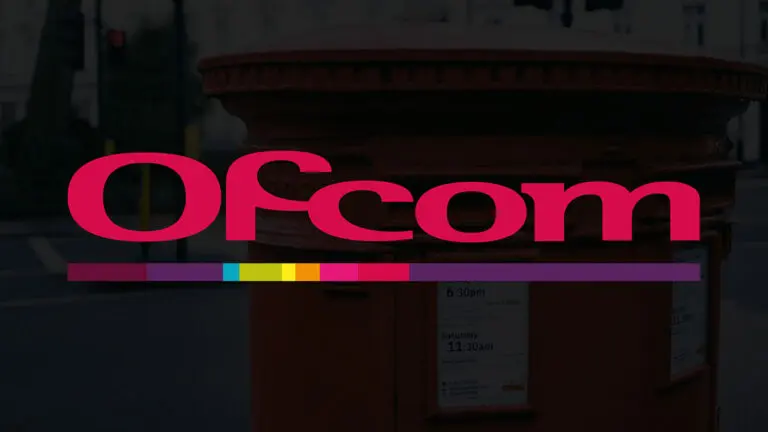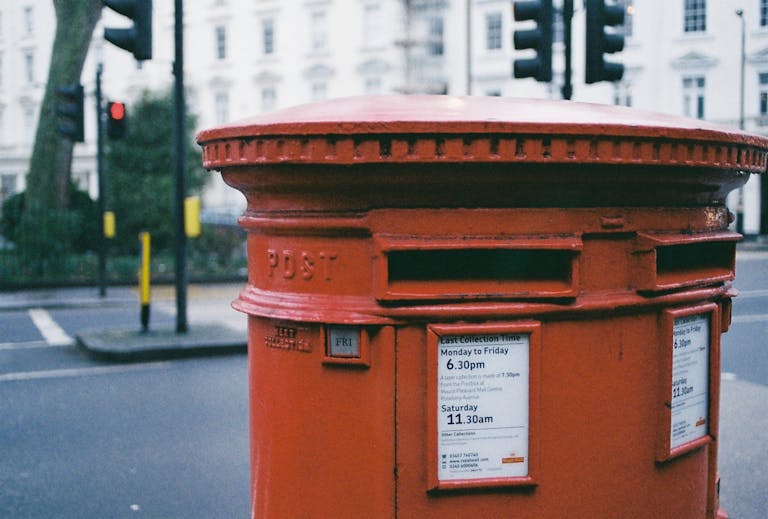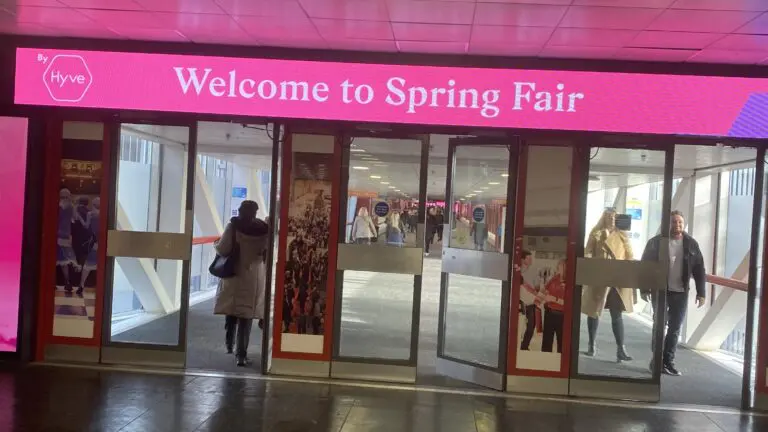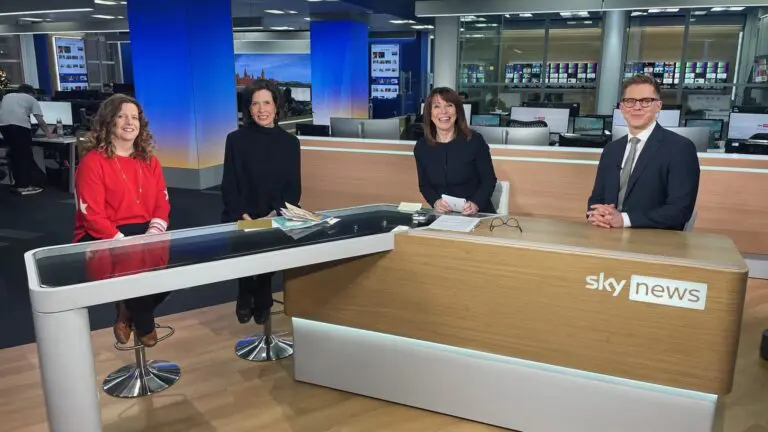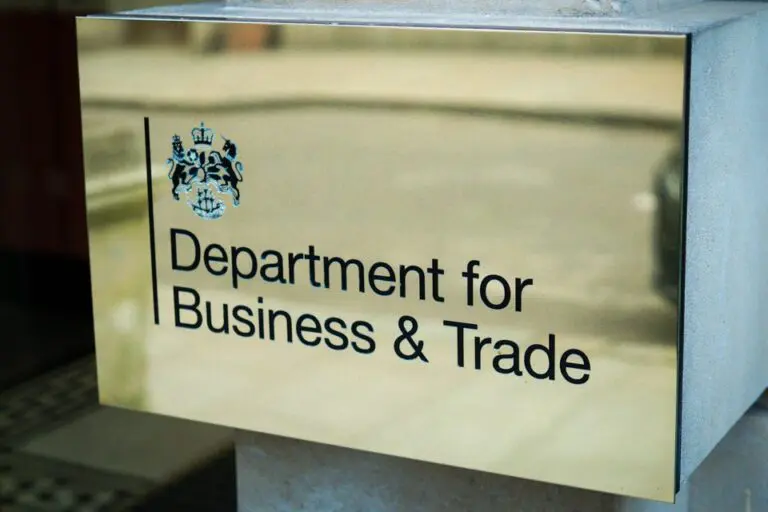
David Falkner, owner of Cardology, kindly shares his experience and insight into the opportunities of the growing market for Eid greeting cards. Pictured with David above are his fellow Directors Dipa and Kripa.
As I was completing my weekly grocery shop one Sunday in March, I was struck by just how prepared some of the big chains already are for the forthcoming Eid festival. Be it high-end table runners, decorations or exciting food, there’s a wealth of product out there catering for this growing market, valued at £200m in the UK alone but with only 62% of UK Muslims believing they are currently well served by brands[1]. My thoughts then turned to how Eid directly benefits our own industry.
Who’s buying cards and how do I reach them?
As publishers, the key to success is knowing who to target with your offering, as well as where and when. There is certainly a large market for Eid cards. The ONS estimate Muslims presently account for c.7% of the UK population[2]. For those with good distribution in London, this region should be a particular focus (14.2% of the population are currently estimated to be Muslim), but the West Midlands (8.3%), the North West and Yorkshire & Humberside (both 6.6%) are also areas where such cards are often well-received.
Naturally, there is considerable variation at a more local geographical level. An understanding of this local knowledge is invaluable in ensuring you are selling the right product in a local area. For example, 42.1% of Newham’s population is currently estimated to be Muslim.
It is also worth considering pitching such work to destination shops that may have particular appeal for tourists as well as local customers. GCA member James Mace, from The Art File, for example, is quick to praise Fenwicks and Selfridges as notable retailers who have been successfully selling their Peace & Blessings Religious Events and Occasions designs for some time now. Similarly, in the pre-Covid world, we found own Eid cards did particularly well for us in Covent Garden.
For emerging publishers without established distribution, the market remains just as accessible. Within the GCA’s Diversity Forum, we’ve regularly discussed just how much of a game-changer the online marketplaces and print on demand services are for individuals looking to test out new work, or to offer designs with appeal for dispersed groups. During my research for this article, I counted over 40 individual Eid designs on each of the major print of demand platforms. For the online marketplaces like Amazon and Etsy, that number runs into the thousands. Running a very basic calculation of the number of reviews found against such products, and then equating this to industry averages for percentages of customers leaving reviews, offers some sense of the commercial opportunity Eid already offers many cognisant publishers.
What sort of product appeals?
The beauty of our market is that opportunities abound to match your individual style to different groups of customers. Against this context, I suspect each of us would also readily recognise that understanding the themes and trends which feature in the products that already sell well, offer us the best chance of commercial success when deciding whether to innovate upon, or break entirely with, such history within our own work.
There aren’t really fixed colour palates for either of the Eid festivals, in the same way as one might readily associate Red, Green and Gold with Christmas, for example.
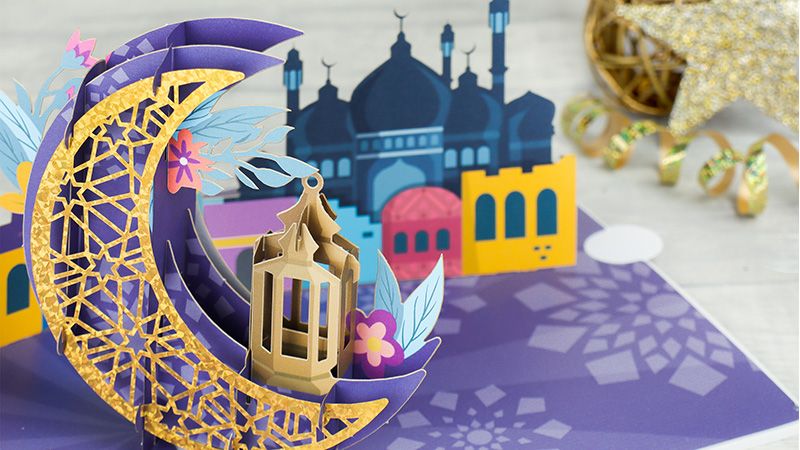
That said, publishers such as Manal Aman[3] offer a strong case for using purples, deep blues and pinks in any colour scheme for Eid-Ul-Fitr; drawing on both the festivals’ connection to nature in a celestial way, as well as the great Eid memories many Muslims have of celebratory meals at sunset. Because of the nocturnal nature of many of the festivities, this also means black colour schemes can feature more readily in such work than they might for other religious designs.
Manal suggests that Eid-Ul-Adha may also offer additional scope for including a Green colour scheme many frequently culturally associate with Islam. There are many reasons for this association, not least the reference within the Quran that the people of paradise would wear Green[4].
For both occasions, Gold accenting plays well to themes of both light and celebration associated with the festivals.
Several of the more commercially successful publishers I’ve spoken with have been at pains to stress the importance of applying modern design principles to their work, and of the cultural fusion required to be successful selling in ‘Western’ markets:
Jomana Siddiqui; founder of modernEID, based out of the West Coast in the US, lists collaborations with Macy’s and Saks Fifth Avenue as defining stepping points for her business, both of which she attributes to her singular focus upon product which ‘celebrate American Muslim modernity’[5]. Jomana explains that her mission was initially complicated by the added pressure of attempting to educate retailers that leading solely with Mid-East centric designs or stereotypical artwork alone wouldn’t always work. Indeed, Jomana attributes her success to prioritising wider trends in stationery and home into her designs. For ModernEID, rustic, modern farmhouse and boho are key emerging themes, increasingly complimenting/replacing more established calligraphy and gold designs.
Dr. Mamnun Khan, a social analyst and author of Being British Muslims, provides supporting contextual evidence as to why leaning into mainstream trends may be an equally invaluable strategy for our own domestic market, highlighting that 2019 was the first time over 50% of British Muslims were born in the UK[6]
Here at Cardology, our mainstream focus centres around the very premium end of the card market, and we’ve found Eid offers significant scope for high-end, card+ products. Longstanding Eid card publishers; Davora, also highlight the market for paper money wallets given the focus on giving and receiving gifts. Publishers considering related card+ offerings should be sure to consider the Halal credentials of your product if your proposed add-on is edible in nature.
One also shouldn’t forget the overlapping market for products for Muslims with families in, or with links to, Africa; where the Eid-Ul-Adha festival is often known as Tabaski.
As I’ve written this article, several publishers have highlighted how much the range of Eid products has proliferated over the past 10 years. This prompts interesting questions for a generation that haven’t previously had such choice and are now learning HOW to celebrate now that there is a wider selection of products at their disposal. Traditions are still in the works of being established and this offers a fantastic opportunity for innovative entrants.
As Dr. Khan puts it, it’s important to recognise that ‘we’re living through an intergenerational period where consumer products and services are concurrently tailored and mainstreamed to capture Muslim consumers’. In turn, such products enhance ‘an ongoing exploration of cultural expressions that speak of a confident, immersed and indigenised sense of being Muslim in the British Isles’. Product owners who understand this dynamic appear to stand the best chance of success. Put more succinctly, Dr. Khan advises taking a similar approach as you might take ahead of any range launch ‘Product owners need to stay in touch with Muslims and keep speaking to them’.
When does the market peak?
For those of us with a borderline obsession around email open rates, conversion rates, return on spend as well as on shelf dates (is there anyone who isn’t in 2021?), the nature of the Eid-Ul-Fitr celebration throws up some really interesting challenges, not least due to it being preceded by the holy month of Ramadan.
In view of this, some Muslim families like to get organised ahead of time, which is why we regularly see so much product on shelf locally, and online, as far out as two-three months ahead.
As we get nearer to May 12th sales continue to ramp gradually (Davora describe the buying pattern as being akin to Christmas). One of the key opportunities Raj Arora, owner of the Davora, highlights is that retailers who start early and leave product out right up until Eid itself often deliver the best returns on the space and time invested.
When selling during Ramadan, it’s also worth keeping in mind the rhythm of the daily fasts and related abstinence, and how family time at the end of the day may influence purchasing habits, particularly when thinking of the send time of that direct response email.
Equally, don’t forget it’s not just practicing Muslims who buy Eid cards: Again, Raj and others point out that many non-Muslims are buying cards for their Muslim friends, neighbours and colleagues, as awareness of the festival becomes more mainstream – a gesture frequently both appreciated and even reciprocated.
Final thoughts
The relatively young age profile of the Muslim population within the UK means that this market is almost certain to continue to grow over the coming decades. Ogilvy already define it as the third biggest UK season after Christmas and Easter. For me, as a South London native, that’s exciting on two fronts: Firstly, as a chance to learn from others who share the eclectic melting pot that is my home. Secondly, as a commercial publisher, I love the scope this offers to work on fresh creative, grow our business and practice meaningful inclusivity.
For more information see blog on the history of card sending at Eid . If you have ideas or thoughts to share on Eid, or other cards sending occasions, please contact Amanda at the GCA
[1]Ramadan offers brands a chance to practise meaningful inclusivity (campaignlive.co.uk) See also https://www.ogilvy.com/uk/capabilities/islamic-branding
[3] Muslim Holiday Colors – Hello Holy Days!, 2016
[4] Green in Islam – Wikipedia
[5] https://www.moderneid.com/pages/about
